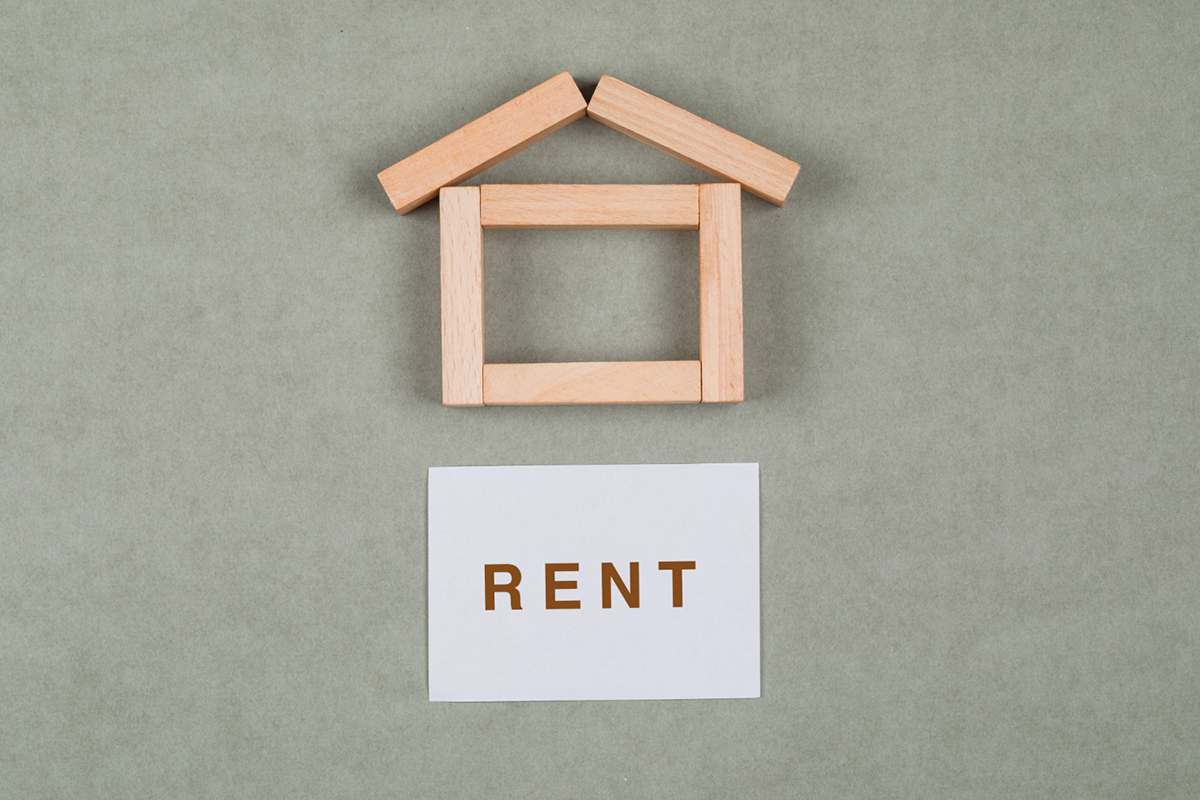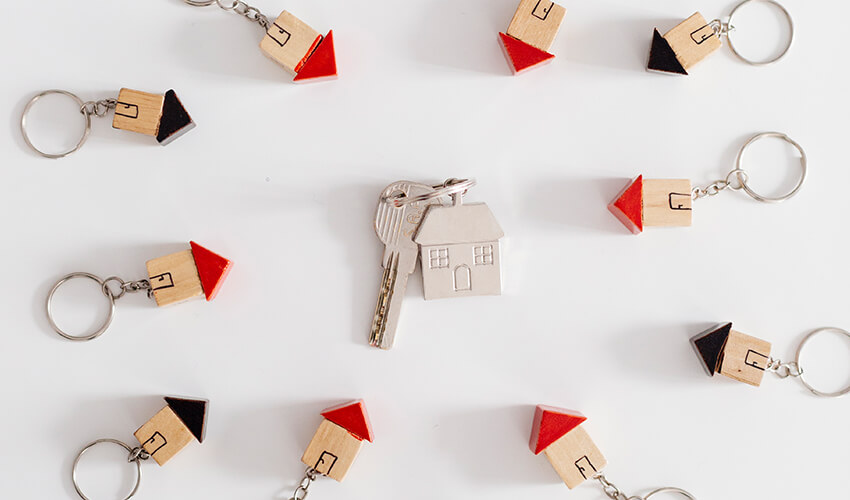How to Advertise Your Rental Property
How To Advertise Your Rental Property
Ugh, that sound of silence? It’s your rental property’s ROI slowly draining away.
That won’t do.
Here’s how to advertise your rental property and how to get more tenant leads:
The Prep: Getting Your Rental Property for Advertising
Before you rush to advertise, let’s make sure your property is ready for the market:
Presenting a Rent-Ready Property
A clean and well-maintained property speaks volumes about how you, as a landlord, will treat your tenants and the property itself. So, before you even think about showing the place, address any cleaning or maintenance issues that could make it unlivable or unattractive.
Don’t underestimate the power of a sparkling kitchen, spotless bathrooms, and freshly cleaned carpets. These details make a huge difference in first impressions.
Beyond the surface-level tidiness, tackle those seemingly minor repairs. A leaky faucet or broken window latch might seem minor to you, but to a prospective tenant, they’re red flags, hinting at potential neglect or future deposit disputes.
Investing a little upfront to fix these issues improves the appeal of your property and prevents larger problems and expenses from rearing their ugly heads further down the road.
Remember, first impressions are everything.
Determining the Right Rental Price
Okay, so you’ve got a dream figure in your head, right? Totally understandable. But here’s the thing: setting that price without checking out what’s actually happening in your local rental scene is like trying to sell ice cream in winter; it’s going to sit there for a while.
Instead of just pulling a number out of thin air, let’s get smart about this and put together a solid rental pricing strategy.
Take a look around at other rentals near you that are similar to yours. What are those places actually going for? Think about what makes your place tick, too. Is it bigger? Got desirable extras like parking or laundry in the unit?
Is it brand spanking new or got a little character? And hey, what’s the vibe in your area right now? Are vacancy rates high or low? That might mean you need to be a bit more competitive with your price.
Price it too high, and crickets. Price it too low, and you might get flooded with interest, but you could be leaving cash on the table, and you might not attract the most stable tenants. Finding that sweet spot takes a little digging, but it’s totally worth it.
Understanding Your Ideal Tenant Profile
Let’s also take a moment to picture your ideal tenant. Who are you hoping to attract? Consider things like their age range, whether they’re a family or single professional, and what kind of job they might have.
Then, consider their lifestyle. Do they absolutely need a place that welcomes pets? Is being super close to public transport a must-have for them? What about their needs? Are they looking for specific amenities, like in-unit laundry or a certain lease length?
Really getting clear on who your ideal renter is will directly shape how you advertise your property and help you nail your messaging. It’s all about hitting the right note to attract the kind of tenants who will be a great fit for your property.
The Pitch: Crafting a Compelling Rental Listing
Your rental property’s up to scratch. Now, let’s break down how to create a rental listing that lands:
Capturing High-Quality Visuals
Here, you have two options: taking them yourself or bringing in the professionals.
If you’re handling the photos yourself, take the time to inject good lighting into your photos (natural light is your best friend!), use wide angles to showcase the space, and don’t be afraid to show off key features like updated kitchens, spacious living areas, and outdoor spaces.
And if you’re able to, declutter and stage each room to present it in its best light.
Professionally taken high-quality listing photos capture the best your property has to offer, far better than a quick snap from a phone. They create a sense of professionalism and trust, showing potential tenants that you are a serious and attentive landlord, which will lead to more inquiries and faster tenant placement.
For more tips, check out our article on why professional real estate photography matters.
Writing an Engaging Rental Property Ad
The best rental listing descriptions start with a catchy headline that grabs attention immediately. Instead of a generic “3 Bed, 2 Bath for Rent,” try something more enticing like “Spacious Family Home in Prime Location with Updated Kitchen!”
Next, provide a detailed description of the property’s features and amenities. Go beyond just saying “stainless steel appliances” and mention the convenience of a dishwasher or the energy efficiency of the refrigerator.
Don’t forget to mention nearby attractions and conveniences. Is your property a short walk to cafes, restaurants, public transport, or grocery stores? If there is anything in the local area that’ll appeal to your ideal tenants, be sure to mention it.
Of course, details like the clear information on rent, security deposit, and lease terms must be included. Transparency here builds trust and avoids wasting time with unqualified inquiries.
Remember, your rental property photos and descriptions need to work together to seal the deal, so use them together to create a story that sells.
Stuck? Here are some tips on how to write an engaging listing.
Going Digital: Online Rental Advertising
Your next tenants are likely scrolling through online listings right now. So, let’s look at how to post a rental property online and maximize a rental property’s visibility.
Rental Property Listing Sites
Rental property listing sites are the go-to place for tenants searching for their next home. These platforms aggregate thousands of listings, making it a breeze for renters to filter by location, price, property type, and amenities.
Many of them also participate in syndicated rental listings. What’s that? Your listing, once posted on a listing site, will be distributed to a network of other smaller rental websites and classifieds, expanding your reach without any extra effort on your part.
The best website to list a rental property? With us, Ziprent, of course. Head over here to get started.
Social Media
Don’t sleep on socials. Platforms like Facebook Marketplace, Facebook Groups, and Instagram can be surprisingly effective at reaching potential tenants.
Here are some online rental advertising tips for social media:
- Like on listing sites, high-quality photos and even short video tours capture attention on a busy social feed.
- Write concise and attention-grabbing captions that highlight the key features and benefits of your property.
- Join relevant local community groups on Facebook and share your listing there. Be sure to follow the group’s rules for posting.
- The “Property for rent” category on Facebook Marketplace is specifically designed for rental listings and can reach a broad audience within your specified area.
- For a wider reach, consider running targeted Facebook or Instagram ads to people in your desired demographic and location who have shown interest in housing.
Craigslist
Craigslist can be a useful tool in your online rental advertising arsenal, particularly for reaching a local audience without incurring listing fees in most areas. To get started, head over to the Craigslist website for your specific city or region. In the top right-hand corner, you’ll find a “post” button to create a new listing.
When creating your ad, start with a clear and concise title that highlights the key features and location of your rental. For example, “Bright 2BR Apartment in Downtown Austin – Available Now!” It’ll help potential tenants quickly identify if your property matches their basic criteria.
The listing description should provide an overview of your rental. Include details such as the number of bedrooms and bathrooms, square footage (if known), available amenities (parking, laundry, air conditioning, etc.), the monthly rent, security deposit amount, and your policies on pets and smoking.
Upload those high-quality photos you took earlier that showcase the best features of your property. Then, in the “contact info” section, clearly state how interested parties should contact you, whether by email or phone.
Just be careful! Due to the nature of Craigslist, it’s wise to exercise caution and be aware of potential scams. Always aim to meet prospective tenants in person at the property for viewings.
If you’re worried about scams on either social media or Craigslist, read our guide on how to avoid rental scams.
Staying Local: Offline Rental Advertising
Online renting marketing channels aren’t your only option. You can complement them with direct and local approaches:
Traditional Signage
It might seem old school, but the classic “For Rent” sign still holds value, especially if your property is located in a high-traffic area with good visibility.
For your signage to be effective, keep these tips for advertising rental property in mind:
- Use a large, easy-to-read font that screams “this property is for rent.”
- At a minimum, include “For Rent” and your phone number. Consider adding the number of bedrooms if space allows.
- Position the sign where it’s easily visible from the street. Consider both pedestrian and vehicle traffic.
- And use weather-resistant materials so your sign remains clear and intact.
Networking and Word-of-Mouth
Never underestimate the power of your personal and professional networks. Let your friends, family, colleagues, and acquaintances know that your property is available for rent. They might know someone who is looking or be able to spread the word within their own circles.
Often, the best tenants come through trusted recommendations.
Local Community Boards and Publications
Depending on your target demographic and the nature of your property, exploring local community boards and publications can be worthwhile. Notice boards in community centers, libraries, local coffee shops, and even some grocery stores can be seen by people living in the immediate area.
Similarly, local newspapers or community newsletters might have classified sections that reach a segment of the population that might not be as active online.
Consider where your ideal tenant might frequent or look for local information. A notice board near a university might be effective for attracting students, while a local community newsletter could reach families in the neighborhood.
Feeling a little unsure about anything up until this stage? Calling in the professionals is never a bad idea: Do I Need to Hire a Property Management Company?.
Fine-Tuning: Optimizing Your Advertising for Maximum Impact
How to get your rental property noticed amidst the competition? Let’s talk about making sure all your hard work up to this point will attract a steady stream of qualified tenants:
Search Engine Optimization (SEO) Basics for Rental Listings
Even if you’re listing on third-party rental websites and not your own, understanding basic SEO will give your listing an edge over the competition.
The first step? When creating a rental listing, consider the words someone would type into a search bar to find a property like yours. Why? Using relevant terms helps a search engine like Google connect your listing with the right tenants.
For instance, instead of just saying “2 Bedroom Apartment,” you might use “Spacious 2 Bedroom Apartment in [Location] near [Popular Landmark] with Parking.”
In the property’s listing description, naturally incorporate terms that tenants are likely to search for. If your property boasts a specific feature, like “in-unit laundry” or is “pet-friendly,” include those phrases.
The Importance of High-Quality Content
We’ve touched on this, but it’s worth repeating: high-quality assets like photos or a virtual tour set your property apart from others.
And another quick note on descriptions: Don’t just list features; highlight the benefits.
Instead of “balcony,” say “private balcony perfect for enjoying your morning coffee or hosting friends and family.” A well-written description answers questions or doubts upfront, saving you time and attracting more serious inquiries.
Responding Promptly to Inquiries
Potential tenants are often looking at multiple properties, and a delayed response can mean the difference between securing a viewing and losing out to a competitor.
So, make it a priority to respond to all inquiries quickly and professionally. This shows that you are a responsive and attentive landlord, which is a positive sign to prospective tenants.
Tracking Your Advertising Efforts
To succeed with your future campaigns, track where your inquiries are coming from. Ask potential tenants how they found your listing. Are they responding to your Craigslist ad? Did they find you through a Ziprent listing? Were they referred by a friend?
Monitor your rental marketing channels and their effectiveness, and you can focus your resources on the platforms that are yielding the best results.
The Last Hurdle: Tenant Screening and Application Process
You’ve successfully advertised your property, and now the inquiries are rolling in. Happy days! But the journey to finding the right tenant isn’t over yet. The next step is to implement a thorough and fair process for evaluating potential renters.
This is where the tenant screening process comes into play. The process involves carefully evaluating each applicant to assess their suitability as a tenant.
Here are some tips to help you out:
- Reviewing an applicant’s credit report provides insight into their financial responsibility and history of paying debts.
- Background checks reveal any prior criminal history, which will secure the safety and security of your property and other tenants (if applicable).
- Contacting previous landlords provides valuable information about an applicant’s past tenancy, including their payment history, care for the property, and adherence to lease terms.
Following the screening process, you’ll move on to the rental application process. This is where interested applicants formally provide you with the necessary information to conduct your screening. A well-structured rental application will typically request details such as:
- Personal information (name, contact details, current address)
- Employment history and income verification
- Previous rental history and landlord contact information
- References
- Consent for credit and background checks
Having a consistent and legally compliant rental application process ensures that you gather the necessary information from all applicants uniformly.
This stage of the process can be tough. This will help: Steps to Becoming a Landlord: A Comprehensive Guide.
Empower Your Rental Property Advertising Efforts With Ziprent
Need a hand? With Ziprent, renting your property is as easy as submitting your property details. Don’t worry, there are no upfront costs to explore our platform.
Once you’re in, our service includes professional photography, on-demand showings, instant screenings, and even automated lease generation.
Plus, our 24/7 support team has your back for everything from rent coordination to maintenance.
Ready for a smoother rental experience? Check out our property management services today.How To Advertise Your Rental Property
Ugh, that sound of silence? It’s your rental property’s ROI slowly draining away.
That won’t do.
Here’s how to advertise your rental property and how to get more tenant leads:
The Prep: Getting Your Rental Property for Advertising
Before you rush to advertise, let’s make sure your property is ready for the market:
Presenting a Rent-Ready Property
A clean and well-maintained property speaks volumes about how you, as a landlord, will treat your tenants and the property itself. So, before you even think about showing the place, address any cleaning or maintenance issues that could make it unlivable or unattractive.
Don’t underestimate the power of a sparkling kitchen, spotless bathrooms, and freshly cleaned carpets. These details make a huge difference in first impressions.
Beyond the surface-level tidiness, tackle those seemingly minor repairs. A leaky faucet or broken window latch might seem minor to you, but to a prospective tenant, they’re red flags, hinting at potential neglect or future deposit disputes.
Investing a little upfront to fix these issues improves the appeal of your property and prevents larger problems and expenses from rearing their ugly heads further down the road.
Remember, first impressions are everything.
Determining the Right Rental Price
Okay, so you’ve got a dream figure in your head, right? Totally understandable. But here’s the thing: setting that price without checking out what’s actually happening in your local rental scene is like trying to sell ice cream in winter; it’s going to sit there for a while.
Instead of just pulling a number out of thin air, let’s get smart about this and put together a solid rental pricing strategy.
Take a look around at other rentals near you that are similar to yours. What are those places actually going for? Think about what makes your place tick, too. Is it bigger? Got desirable extras like parking or laundry in the unit?
Is it brand spanking new or got a little character? And hey, what’s the vibe in your area right now? Are vacancy rates high or low? That might mean you need to be a bit more competitive with your price.
Price it too high, and crickets. Price it too low, and you might get flooded with interest, but you could be leaving cash on the table, and you might not attract the most stable tenants. Finding that sweet spot takes a little digging, but it’s totally worth it.
Understanding Your Ideal Tenant Profile
Let’s also take a moment to picture your ideal tenant. Who are you hoping to attract? Consider things like their age range, whether they’re a family or single professional, and what kind of job they might have.
Then, consider their lifestyle. Do they absolutely need a place that welcomes pets? Is being super close to public transport a must-have for them? What about their needs? Are they looking for specific amenities, like in-unit laundry or a certain lease length?
Really getting clear on who your ideal renter is will directly shape how you advertise your property and help you nail your messaging. It’s all about hitting the right note to attract the kind of tenants who will be a great fit for your property.
The Pitch: Crafting a Compelling Rental Listing
Your rental property’s up to scratch. Now, let’s break down how to create a rental listing that lands:
Capturing High-Quality Visuals
Here, you have two options: taking them yourself or bringing in the professionals.
If you’re handling the photos yourself, take the time to inject good lighting into your photos (natural light is your best friend!), use wide angles to showcase the space, and don’t be afraid to show off key features like updated kitchens, spacious living areas, and outdoor spaces.
And if you’re able to, declutter and stage each room to present it in its best light.
Professionally taken high-quality listing photos capture the best your property has to offer, far better than a quick snap from a phone. They create a sense of professionalism and trust, showing potential tenants that you are a serious and attentive landlord, which will lead to more inquiries and faster tenant placement.
For more tips, check out our article on why professional real estate photography matters.
Writing an Engaging Rental Property Ad
The best rental listing descriptions start with a catchy headline that grabs attention immediately. Instead of a generic “3 Bed, 2 Bath for Rent,” try something more enticing like “Spacious Family Home in Prime Location with Updated Kitchen!”
Next, provide a detailed description of the property’s features and amenities. Go beyond just saying “stainless steel appliances” and mention the convenience of a dishwasher or the energy efficiency of the refrigerator.
Don’t forget to mention nearby attractions and conveniences. Is your property a short walk to cafes, restaurants, public transport, or grocery stores? If there is anything in the local area that’ll appeal to your ideal tenants, be sure to mention it.
Of course, details like the clear information on rent, security deposit, and lease terms must be included. Transparency here builds trust and avoids wasting time with unqualified inquiries.
Remember, your rental property photos and descriptions need to work together to seal the deal, so use them together to create a story that sells.
Stuck? Here are some tips on how to write an engaging listing.
Going Digital: Online Rental Advertising
Your next tenants are likely scrolling through online listings right now. So, let’s look at how to post a rental property online and maximize a rental property’s visibility.
Rental Property Listing Sites
Rental property listing sites are the go-to place for tenants searching for their next home. These platforms aggregate thousands of listings, making it a breeze for renters to filter by location, price, property type, and amenities.
Many of them also participate in syndicated rental listings. What’s that? Your listing, once posted on a listing site, will be distributed to a network of other smaller rental websites and classifieds, expanding your reach without any extra effort on your part.
The best website to list a rental property? With us, Ziprent, of course. Head over here to get started.
Social Media
Don’t sleep on socials. Platforms like Facebook Marketplace, Facebook Groups, and Instagram can be surprisingly effective at reaching potential tenants.
Here are some online rental advertising tips for social media:
- Like on listing sites, high-quality photos and even short video tours capture attention on a busy social feed.
- Write concise and attention-grabbing captions that highlight the key features and benefits of your property.
- Join relevant local community groups on Facebook and share your listing there. Be sure to follow the group’s rules for posting.
- The “Property for rent” category on Facebook Marketplace is specifically designed for rental listings and can reach a broad audience within your specified area.
- For a wider reach, consider running targeted Facebook or Instagram ads to people in your desired demographic and location who have shown interest in housing.
Craigslist
Craigslist can be a useful tool in your online rental advertising arsenal, particularly for reaching a local audience without incurring listing fees in most areas. To get started, head over to the Craigslist website for your specific city or region. In the top right-hand corner, you’ll find a “post” button to create a new listing.
When creating your ad, start with a clear and concise title that highlights the key features and location of your rental. For example, “Bright 2BR Apartment in Downtown Austin – Available Now!” It’ll help potential tenants quickly identify if your property matches their basic criteria.
The listing description should provide an overview of your rental. Include details such as the number of bedrooms and bathrooms, square footage (if known), available amenities (parking, laundry, air conditioning, etc.), the monthly rent, security deposit amount, and your policies on pets and smoking.
Upload those high-quality photos you took earlier that showcase the best features of your property. Then, in the “contact info” section, clearly state how interested parties should contact you, whether by email or phone.
Just be careful! Due to the nature of Craigslist, it’s wise to exercise caution and be aware of potential scams. Always aim to meet prospective tenants in person at the property for viewings.
If you’re worried about scams on either social media or Craigslist, read our guide on how to avoid rental scams.
Staying Local: Offline Rental Advertising
Online renting marketing channels aren’t your only option. You can complement them with direct and local approaches:
Traditional Signage
It might seem old school, but the classic “For Rent” sign still holds value, especially if your property is located in a high-traffic area with good visibility.
For your signage to be effective, keep these tips for advertising rental property in mind:
- Use a large, easy-to-read font that screams “this property is for rent.”
- At a minimum, include “For Rent” and your phone number. Consider adding the number of bedrooms if space allows.
- Position the sign where it’s easily visible from the street. Consider both pedestrian and vehicle traffic.
- And use weather-resistant materials so your sign remains clear and intact.
Networking and Word-of-Mouth
Never underestimate the power of your personal and professional networks. Let your friends, family, colleagues, and acquaintances know that your property is available for rent. They might know someone who is looking or be able to spread the word within their own circles.
Often, the best tenants come through trusted recommendations.
Local Community Boards and Publications
Depending on your target demographic and the nature of your property, exploring local community boards and publications can be worthwhile. Notice boards in community centers, libraries, local coffee shops, and even some grocery stores can be seen by people living in the immediate area.
Similarly, local newspapers or community newsletters might have classified sections that reach a segment of the population that might not be as active online.
Consider where your ideal tenant might frequent or look for local information. A notice board near a university might be effective for attracting students, while a local community newsletter could reach families in the neighborhood.
Feeling a little unsure about anything up until this stage? Calling in the professionals is never a bad idea: Do I Need to Hire a Property Management Company?.
Fine-Tuning: Optimizing Your Advertising for Maximum Impact
How to get your rental property noticed amidst the competition? Let’s talk about making sure all your hard work up to this point will attract a steady stream of qualified tenants:
Search Engine Optimization (SEO) Basics for Rental Listings
Even if you’re listing on third-party rental websites and not your own, understanding basic SEO will give your listing an edge over the competition.
The first step? When creating a rental listing, consider the words someone would type into a search bar to find a property like yours. Why? Using relevant terms helps a search engine like Google connect your listing with the right tenants.
For instance, instead of just saying “2 Bedroom Apartment,” you might use “Spacious 2 Bedroom Apartment in [Location] near [Popular Landmark] with Parking.”
In the property’s listing description, naturally incorporate terms that tenants are likely to search for. If your property boasts a specific feature, like “in-unit laundry” or is “pet-friendly,” include those phrases.
The Importance of High-Quality Content
We’ve touched on this, but it’s worth repeating: high-quality assets like photos or a virtual tour set your property apart from others.
And another quick note on descriptions: Don’t just list features; highlight the benefits.
Instead of “balcony,” say “private balcony perfect for enjoying your morning coffee or hosting friends and family.” A well-written description answers questions or doubts upfront, saving you time and attracting more serious inquiries.
Responding Promptly to Inquiries
Potential tenants are often looking at multiple properties, and a delayed response can mean the difference between securing a viewing and losing out to a competitor.
So, make it a priority to respond to all inquiries quickly and professionally. This shows that you are a responsive and attentive landlord, which is a positive sign to prospective tenants.
Tracking Your Advertising Efforts
To succeed with your future campaigns, track where your inquiries are coming from. Ask potential tenants how they found your listing. Are they responding to your Craigslist ad? Did they find you through a Ziprent listing? Were they referred by a friend?
Monitor your rental marketing channels and their effectiveness, and you can focus your resources on the platforms that are yielding the best results.
The Last Hurdle: Tenant Screening and Application Process
You’ve successfully advertised your property, and now the inquiries are rolling in. Happy days! But the journey to finding the right tenant isn’t over yet. The next step is to implement a thorough and fair process for evaluating potential renters.
This is where the tenant screening process comes into play. The process involves carefully evaluating each applicant to assess their suitability as a tenant.
Here are some tips to help you out:
- Reviewing an applicant’s credit report provides insight into their financial responsibility and history of paying debts.
- Background checks reveal any prior criminal history, which will secure the safety and security of your property and other tenants (if applicable).
- Contacting previous landlords provides valuable information about an applicant’s past tenancy, including their payment history, care for the property, and adherence to lease terms.
Following the screening process, you’ll move on to the rental application process. This is where interested applicants formally provide you with the necessary information to conduct your screening. A well-structured rental application will typically request details such as:
- Personal information (name, contact details, current address)
- Employment history and income verification
- Previous rental history and landlord contact information
- References
- Consent for credit and background checks
Having a consistent and legally compliant rental application process ensures that you gather the necessary information from all applicants uniformly.
This stage of the process can be tough. This will help: Steps to Becoming a Landlord: A Comprehensive Guide.
Empower Your Rental Property Advertising Efforts With Ziprent
Need a hand? With Ziprent, renting your property is as easy as submitting your property details. Don’t worry, there are no upfront costs to explore our platform.
Once you’re in, our service includes professional photography, on-demand showings, instant screenings, and even automated lease generation.
Plus, our 24/7 support team has your back for everything from rent coordination to maintenance.
Ready for a smoother rental experience? Check out our property management services today.







